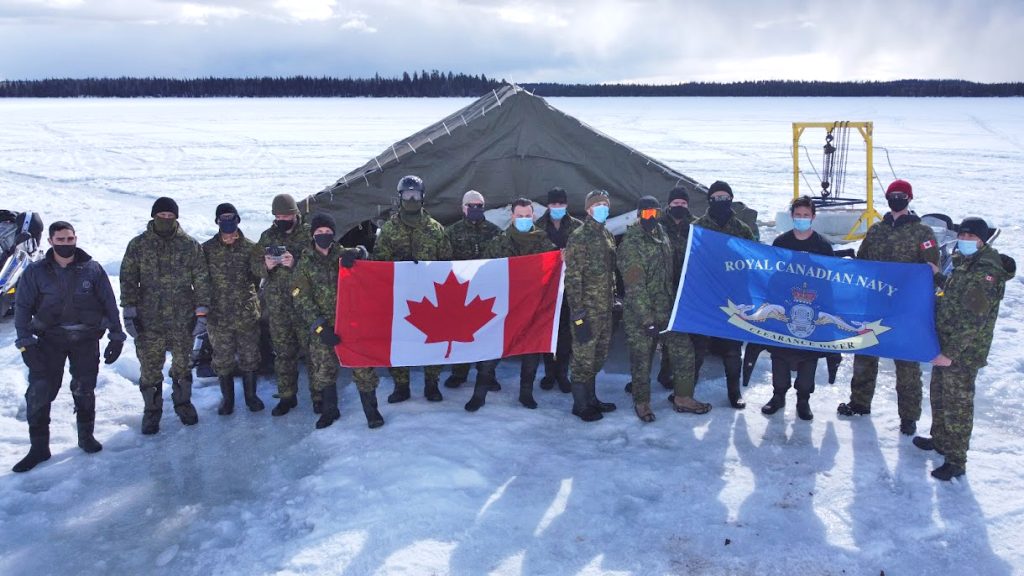Chilly training for clearance divers during ICEDIVEX 21
By Lookout on Mar 31, 2021 with Comments 0

Members of the ICEDIVEX 21 team pose for a group photograph at their dive site out on the lake. Photo by FDU(P)
Peter Mallett
Staff Writer
––
Diving in icy waters might not appeal to most civilian divers but for the navy’s Clearance Divers it is a must.
To maintain operational diving expertise in extreme cold and under-ice environments, they must train to operate in these harsh conditions and ensure their equipment works well.
This was tested the first week of March when nine Fleet Diving Unit (Pacific) Clearance Divers, four Port Inspection Divers, two Marine Technicians and one Physician Assistant deployed to Sheridan Lake, B.C., for ICEDIVEX 21.
Divers, dressed head-to-toe in Ultra-Light Weight Surface Supplied diving equipment and sheltered underneath a modular tent situated on the lake, slipped into a carved-out hole in the ice to exercise in the frigid waters below.
Divers deployed in teams of two, with a third ‘Standby Diver’ remaining on the surface ready to respond in case of emergency. There is the potential for the umbilical, which provides communications and air between the surface and divers, to become severed and for the diver to then become lost in the cold and murky water. As such, the divers all practiced anchoring themselves to the underside of the ice with an ice screw; the normal response to such a situation. This rescue procedure was practiced with the “lost” diver attaching themselves to the ice while the Standby Diver searched for them in the near-dark water. On the surface, another member remained in constant communication with the entire team.
“The water was quite cold and visibility was poor given our depth and the darkness under the ice,” said Lt(N) Jesse Deason, an FDU(P) Clearance Diving Officer.
Before travelling on the lake, the team underwent two days of Light Over Snow Vehicle training with members of the 4th Canadian Ranger Patrol Group. They learned how to operate the vehicles they would use to haul their gear to the site and how to determine unsafe ice conditions.
Using Light Over Snow Vehicles, they towed their diving equipment and an extensive inventory of cold weather gear out onto the ice: six snow sleds and trailers, augers and chain saws, an ice lifting device with hoist and chains, a snow blower, first aid kits and emergency medical supplies, kerosene heaters and generators and more.
“The kit list is incredibly important for this exercise; forgetting one small item could have made the execution a lot more difficult,” said Lt(N) Deason.
When not on the lake, they were in cabins at a nearby fishing resort. Extra health and safety precautions were taken to mitigate COVID-19 and equipment was rigorously cleaned and disinfected in-between dives.
“This exercise enhanced the skill of all participants, especially our junior divers who hadn’t yet had the opportunity to experience an ice dive exercise. That, and it was a lot of fun.”
––––
Filed Under: Top Stories
About the Author:





